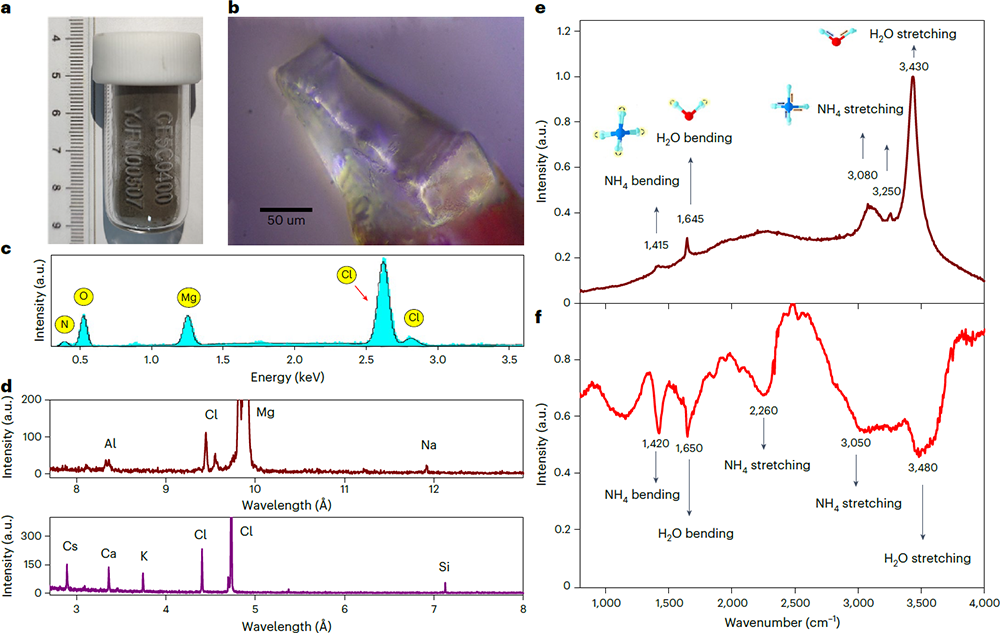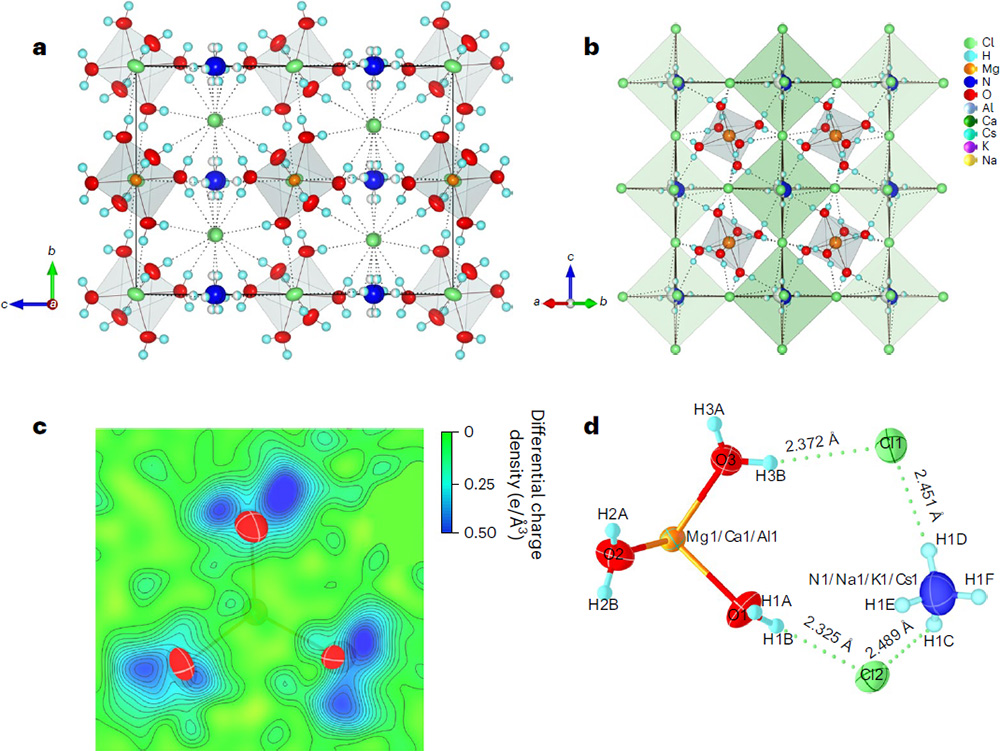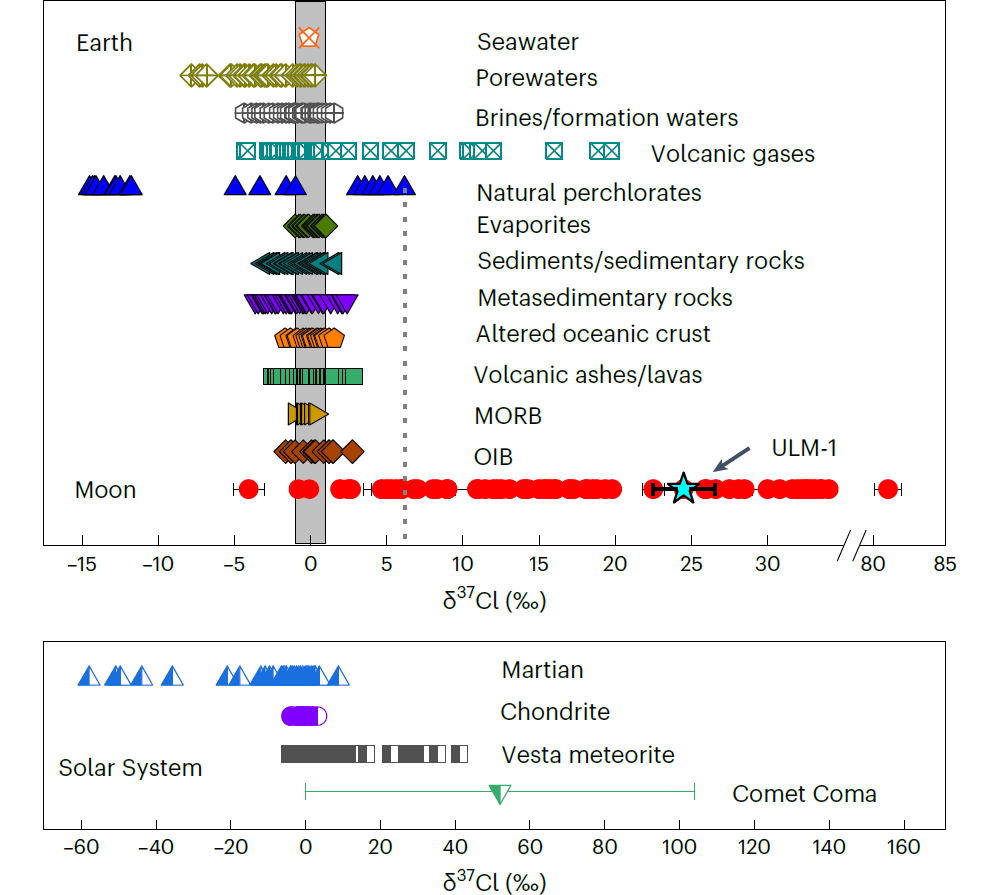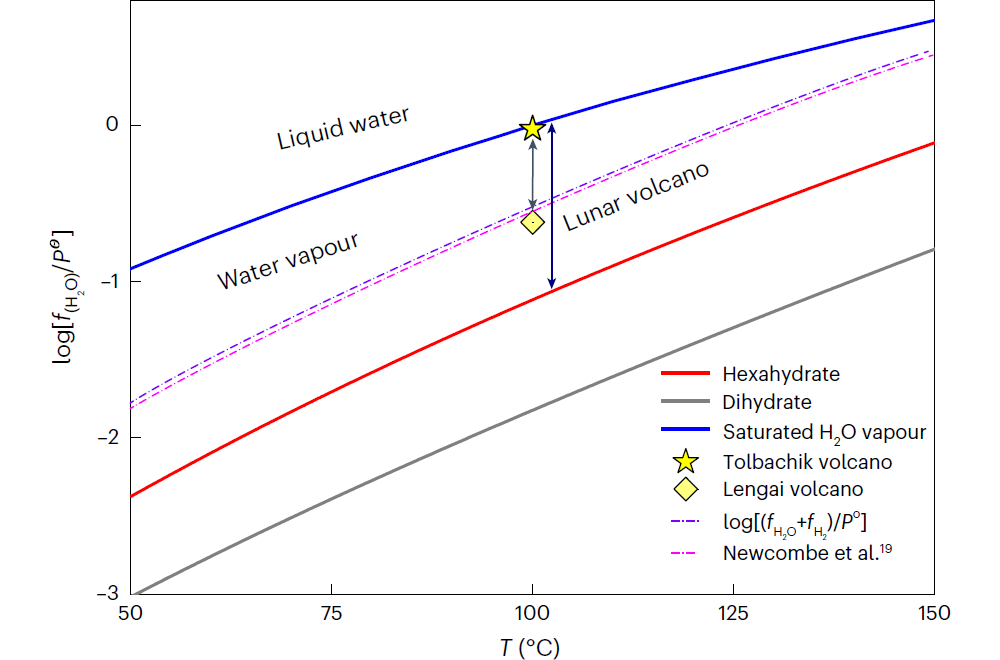Water and ammonium on the Moon: Chinese scientists find new evidence
Date:17-07-2024 Print
Both water and ammonia on the Moon play vital role in understanding the origin and evolution of the Earth-Moon system, meanwhile offering potential key resources for future human lunar habitats.
The moon was thought to be 'bone-dry' since the Apollo missions, as water molecules can easily lost to high vacuum in the hot sunlit moon. More recently, remote observations found lunar water and ammonia may exist as frozen ice, buried in the permanently shadowed regions near the Moon pole. Utilizing advanced instrumentation, examinations of the returned Apollo samples have detected only trace amounts of OH-/H2O at parts per million levels, buried within rare minerals and glass beads.
In a new study just published on Tuesday in the journal Nature Astronomy, Chinese scientists reveal the presence of water and ammonium in returned Chang'e-5 lunar samples, in the form of a hydrated mineral that extremely rich in water and ammonium molecules. This study represents the first discovery of molecule water and ammonium in returned lunar samples, unravelling the actual form of these important molecules exist on our celestial neighbor.
The mineral, identified as (NH4,K,Cs,Rb)MgCl3·6H2O, contains an astonishing 41 wt% of water. Its structure and composition closely resemble a rare terrestrial mineral found in fumaroles, formed by the interaction of hot basalt with water and ammonia-rich volcanic gases.
Thermodynamic analysis on the formation condition of this mineral underpins the lower limits of water and ammonia gases in ancient lunar volcano gases, the results of which are comparable to some of the direst volcanos on earth. This unexpected high value suggests the gas-emitting lunar volcanoes may contributed significantly to the hydrosphere on the moon.
Furthermore, the discovery implies the possible existence of water molecules in sunlit regions of the Moon as hydrated salts, offering exciting prospects for lunar resource utilization and exploration. Unlike water ice, the hydrate is remarkably stable in the Moon's harsh high-temperature and vacuum environment.
The identification of this hydrated mineral marks a significant advancement in our understanding of lunar water and ammonia, highlighting the Moon's potential as a destination for future scientific exploration and human presence.
This study entitled "Evidence of a hydrated mineral enriched in water and ammonium molecules in the Chang'e-5 lunar sample" was published on Nature Astronomy.
The study was supported by the Chinese Academy of Sciences.

Fig.1 Photograph and composition of lunar hydrous mineral ULM-1. (Image by Institute of Physics)

Fig.2 Crystal structure and charge density of lunar hydrate ULM-1. (Image by Institute of Physics)

Fig.3 Chlorine isotope variability in different terrestrial and extraterrestrial reservoirs. (Image by Institute of Physics)

Fig.4 Constraints on water fugacity f(H2O) by the crystallization of ULM-1. (Image by Institute of Physics)
Contact:
Institute of Physics
CHEN Xiaolong
Email:chenx29@iphy.ac.cn
Key words:
Lunar water; lunar hydrate; lunar ammonium; lunar volcanism; Chang'e-5
Abstract:
The presence and distribution of water on the Moon are fundamental to our understanding of the Earth-Moon system. Despite extensive research and remote detection, the origin and chemical form of lunar water (H2O) have remained elusive. In this study, we present the discovery of a hydrated mineral, (NH4)MgCl3·6H2O, in lunar soil samples returned by the Chang’e-5 mission, containing approximately 41 wt% H2O. The mineral's structure and composition closely resemble novograblenovite, a terrestrial fumarole mineral formed through the reaction of hot basalt with water-rich volcanic gases, and carnallite, an earth evaporite mineral. We rule out terrestrial contamination or rocket exhaust as the origin of this hydrate, based on its chemical and isotopic compositions and formation conditions. The presence of ammonium indicates a more complex lunar degassing history and highlights its potential as a resource for lunar habitation.Our findings also suggest that water molecules can persist in sunlit areas of the Moon as hydrated salt, providing crucial constraints to the fugacity of water and ammonia vapor in lunar volcanic gases.

